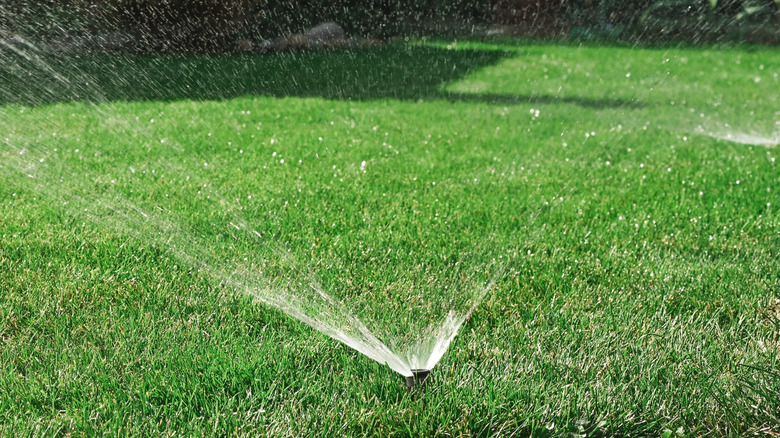The High-Maintenance Lawn Care Task That Really Isn't Worth It
Lawn care isn't for the faint of heart. In the long run, lawn care service can be worth the money, especially if you'd prefer to spend your time away from a garden hose and lawnmower. But if you're a devoted grass grower, you're likely always looking for ways to become a better steward of your lawn. This might lead you to do things like automate your sprinkler system and never deviate from a rigid watering schedule. It turns out, however, that watering your lawn on a strict, clock-based schedule isn't really worth it, wastes water, and can even harm your grass.
Timer-run irrigation systems deliver a set amount of water during a set amount of time; and if you're watering the same way by hand, these tactics don't take into account whether or not your lawn actually needs the water you're giving it. And if you're watering more than you need to, you'll simultaneously raise your utility bill and endanger the health of your grass. Stressing your lawn by restricting the amount of water that you give it, especially in the spring, will encourage deeper root growth. This can't happen if you're watering the same amount at the same time all season long. So what can be done? Well, first, turn off that sprinkler system, step away from the hose, and reevaluate your watering schedule — and try also to avoid these mistakes everyone makes when watering their lawn.
Watering your lawn efficiently
While setting your sprinklers to go off every day at the same time might seem like a savvy gardening hack, it's not actually necessary, especially during cooler seasons like late fall and early spring. Deficit irrigation is the practice of watering plants using a smaller amount of water than the plant loses through evapotranspiration (ET) — the process by which plants and the surrounding soil lose water.
Using a deficit irrigation strategy when it comes to watering your lawn can do two things: It can conserve waste, a critical factor in environmentally friendly gardening, and help your grass become more resistant to drought and develop deeper, stronger roots. When you water, make sure you're soaking the ground thoroughly and evenly. Ideally, you want to irrigate your lawn long enough that the top six to eight inches of soil are well-soaked.
One way to achieve a watering schedule that is healthy for both your lawn and your water bill is to invest in an ET controller. ET controllers use historical and real-time measurements, plus a soil moisture sensor, to determine the rate of ET in your lawn. The ET controller will schedule a watering system based on that rate. If you're looking to be more conscious of your watering practices in other parts of your yard, here's how often you should be watering your garden for healthy vegetables.

